Tips for using this guide: This guide is meant to be self-guided for students above grade 8. Students between grade 3-7 might need some guidance (download worksheet: pdf or docx), and students under grade 3 will need teacher/parent assistance (download worksheet: pdf or pptx). A neighbourhood seed/fruit discovery checklist (pdf or docx) can also be used to supplement this challenge.
Have you ever blown the fluffy seeds off dandelions in the spring time? These seeds could travel a very far distance – sometimes hundreds of metres – away from the original dandelion plant! Do you know why? And how?
Seed dispersal is the term plant scientists, also called botanists, use to describe how seeds move away from their parent plant to establish in new environments. If a seed does not travel away from its parent plant, they will compete for the same resources (light, water, nutrients) because they both have the exact same needs to grow. Seeds can be moved in many ways, including by animals, insects, water, and wind. In this activity, we’ve worked with the UBC Beaty Biodiversity Museum and created a challenge where you can explore wind-dispersed seeds at home. We will learn about features that move seeds effectively on the wind, and the physics behind them!
Questions? Let us know – Your questions will be answered by UBC physicists, as well as the Beaty Biodiversity Museum Team! You can contact us by leaving a comment on this website, emailing us, or reaching out on our social media channels @ubcphasoutreach and @beatymuseum. We will also showcase your wind-dispersed seeds on this page or via social media – you can share using a drawing or a photo of your work, or a video of how your wind-dispersed seeds work!
These two videos are great summaries of why seed dispersal is important for plants, and how plants disperse the seeds. If you are interested in a longer summary, check out this video about how seeds (and even some plants) travel from the 1995 David Attenborough show “The Private Lives of Plants’.
Things you need for creating your own wind-dispersed seeds:
- This webpage. We’ve chosen a few key ideas in physics that will help create your own wind-dispersed seed.
- Supplies. You will first need a seed – you can use a grain of rice, a bean, or even a popcorn kernel (unpopped, of course)! Then you can use supplies from your home to create a way to disperse your seed!
- Safety first. Make sure you use safe materials! If you are not sure, ask adults for help.
- Make it a group project! Before making your wind-dispersed seed, take some time to observe various seeds you can find in your neighborhood using a checklist we provide. You can do this with your family, or a couple of friends. You can also each make a wind-dispersed seed, and compete for the longest hang time or distance!
Plants, seeds, and physics!
Before you build your own, it helps to learn a little bit about plants’ clever ways of dispersing their seeds, and the physics behind how it happens. Check out the sections below to start learning! (and keep an eye out for some very surprised caterpillars!)
Fruits and seeds
Seeds are like a baby plant “egg” (ovule) inside a tiny package that contains all the necessary material to grow a new plant. The fruit surrounds and protects the seed, or seeds, and is derived from the plant’s seed-making ovary.
Once a fruit is ‘ripe’, it will often change colour. For example, a green tomato turns into a red tomato. This signals to a predator – animal or insect – it’s time to eat the fruit and disperse the seeds. That’s right, poo out the seeds! This, in fact, is one way to disperse seeds.
Weight
Gravity pulls down on a seed, and the heavier the seed, the harder it is pulled down. The seed uses other forces to try and keep it up in the air, so the lighter the seed is, the easier this will be to do. This is why seeds that use wind-dispersal are often very light!
One example of wind-dispersed seeds that is very light is a cottonwood seed. Check out the video on the right to see cottonwood seeds travelling on the wind!
Air resistance
When a seed leaves a plant, gravity begins pulling it to the ground. For the seed to disperse it should travel a long way from the parent plant before it gets stuck on the ground! To help with this, the seed can use air resistance to make sure it falls more slowly, giving the wind more time to push it sideways. Air resistance comes from the falling seed needing to push the air out of its way as it falls. By using a shape with lots of area, we can make sure the seed has to push more air out of the way, giving it larger air resistance.
Explore and experiment: If you want to see the feather and hammer experiment for yourself, check out this original footage taken by astronauts on the moon! Or, watch the same experiment done on Earth in a huge vacuum chamber.
Pressure
Have you ever blown up a balloon? Did you feel something pushing back on you when you did that? The push you feel is the pressure of the air inside your mouth. Some plants use pressure to disperse their seeds in something called explosive dispersal. An explosion is when a lot of pressure builds up and then is suddenly released. For example, when you blow up a balloon, you build up the pressure inside the balloon. If you keep blowing the balloon, it will eventually pop – that’s an explosion! Check out some ways that plants use explosions to disperse their seeds in the videos below.
Bernoulli
Have you ever seen maple seeds flying on the wind? Check out the video on the right to see them in action. How do maple seeds do it? The answer has to do with something called Bernoulli’s principle. By spinning, the maple seed creates spinning funnels of air, or vortices, on top of its wing. When air is moving fast, Bernoulli’s principle says it has lower pressure, so the pressure on top of the wing becomes lower than underneath, pushing up on the seed. This helps the seed stay in the air longer, letting it travel further!
Experiment and explore: Check out this Science World video exploring Bernoulli’s principle with two pieces of toilet paper. You can try this at home!
Let’s make wind-dispersed seeds!
Now that you have learned some physics concepts behind wind-dispersed seeds, it is time to build one! We will start by looking for inspiratoins in our neighborhood, and then create a wind-dispersed seed using household materials. Make sure to document your work with photos or videos – and share your work with us on this page or tag us on instagram @ubcphasoutreach and @beatymuseum!
Look for inspiration
Go for a walk in your neighbourhood/local park and look for fruits, seeds and flowers! See if you can find an interesting seed, and maybe you can use the seed you find as the inspiration for your own design! Here are some examples you might find in your neighbourhood (Photos from Beaty Biodiversity Museum herbarium instagram or website, unless otherwise indicated):

Clematis – Clematis columbiana (Fluffy!) 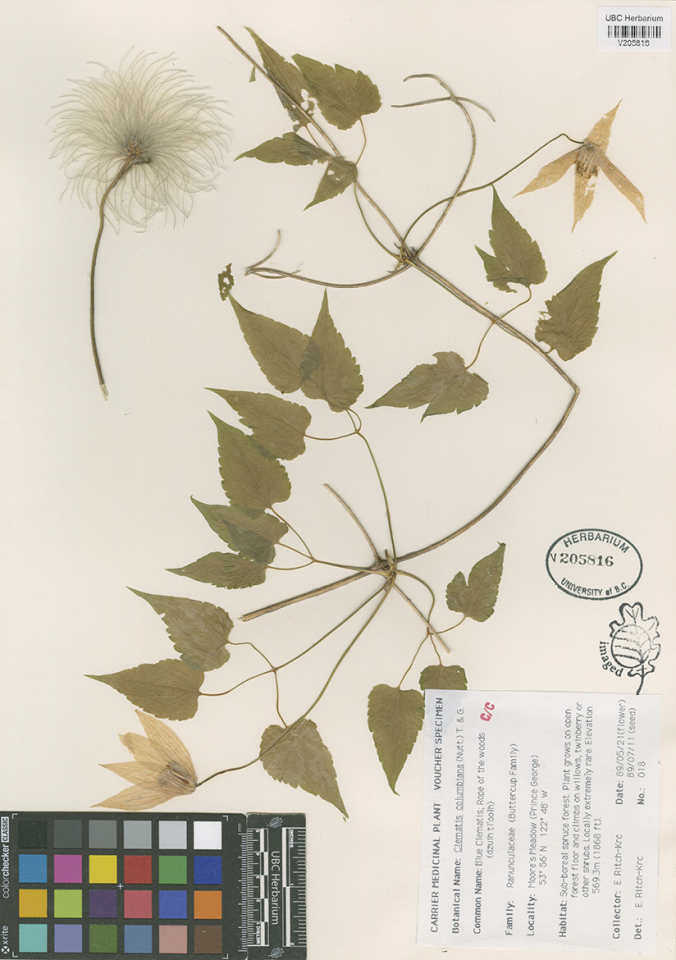
Clematis – Clematis columbiana 
Dandelion – Taraxacum officinale (works like parachutes) 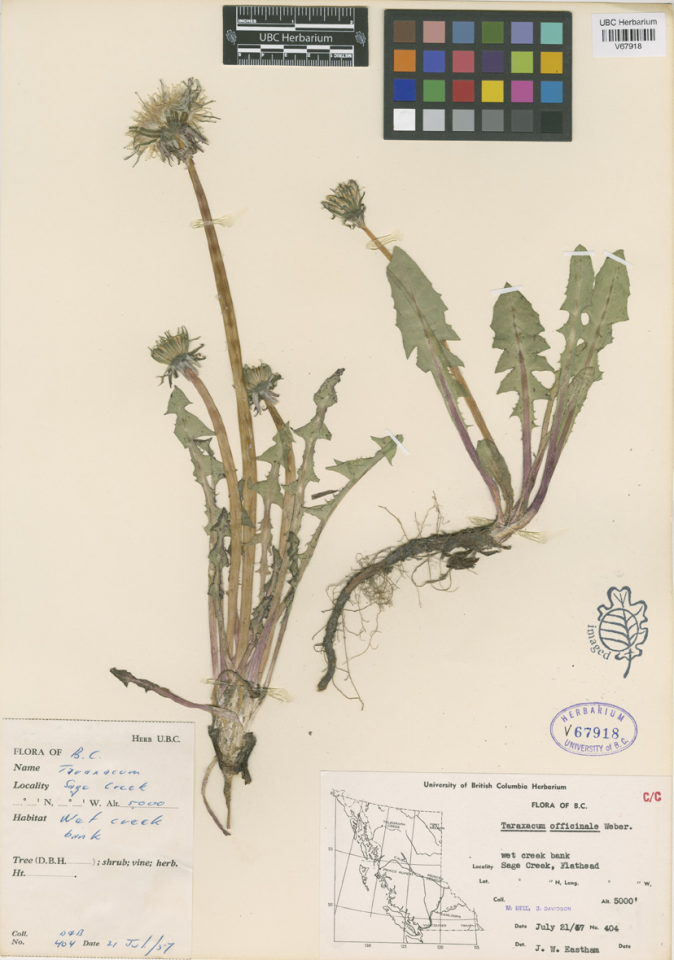
Dandelion – Taraxacum officinale (works like parachutes) 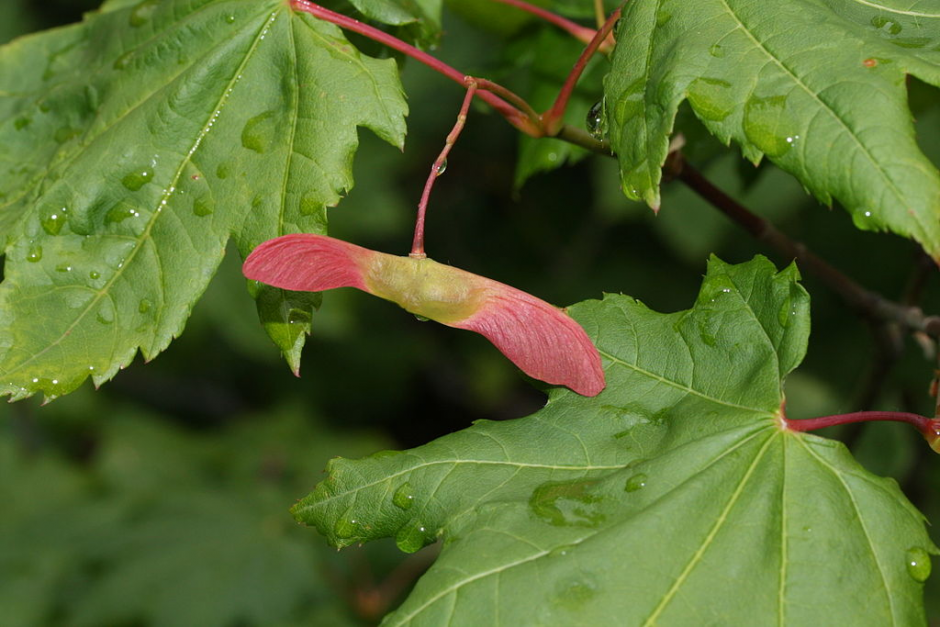
Acer (maple) species: Vine maple (Acer circinatum). Image by Walter Siegmund (via Wikipedia Commons, CC BY-SA 3.0). 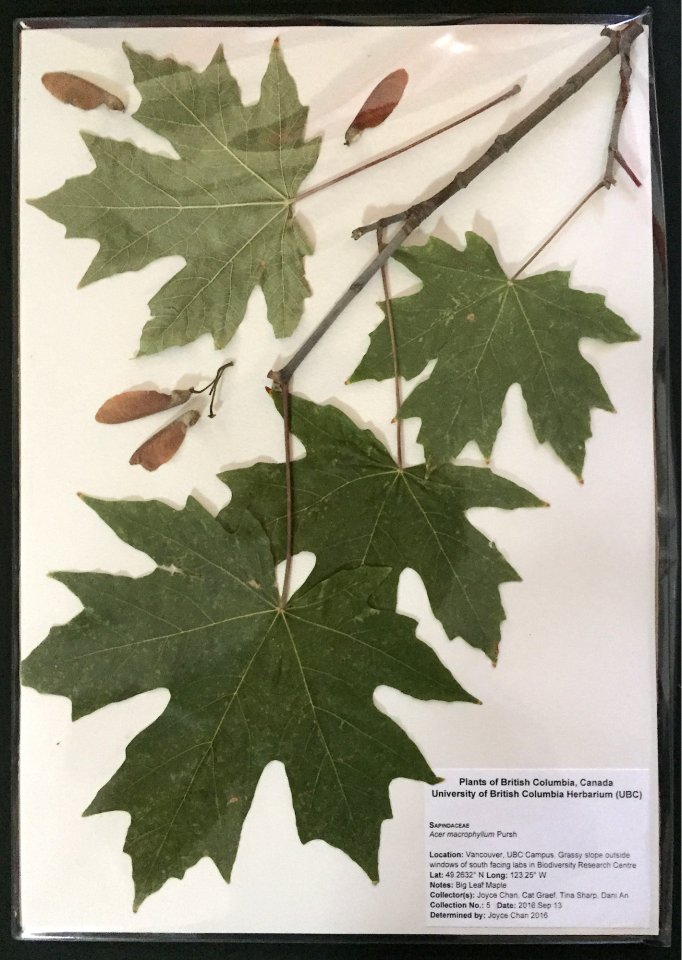
Museum specimens –
Acer (maple) species: Vine maple (Acer circinatum)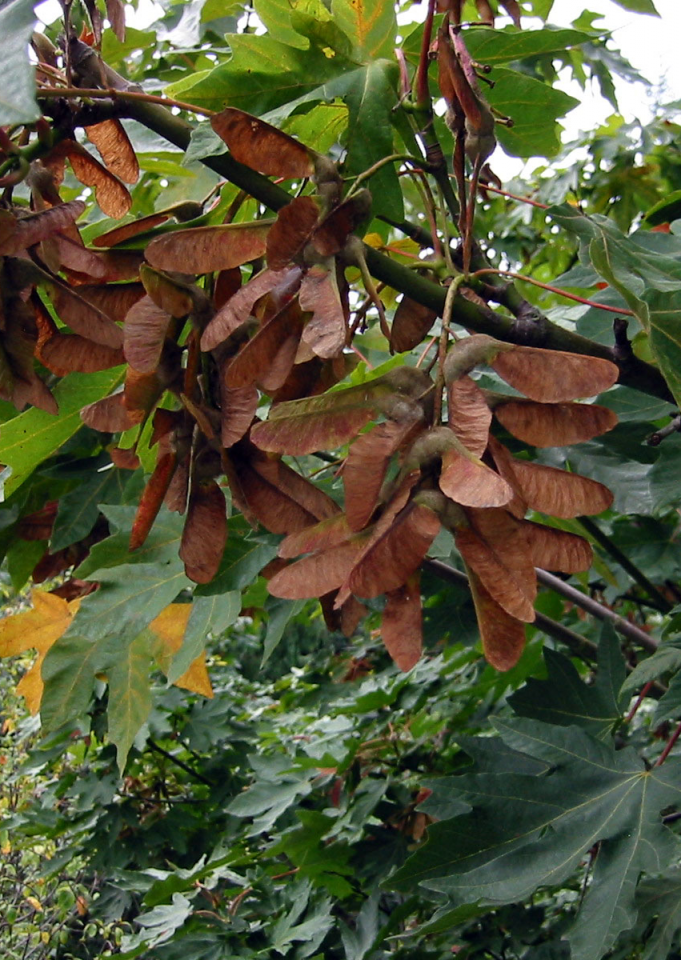
Acer (maple) species: Bigleaf maple (Acer macrophyllum). Image by Walter Siegmund (via Wikipedia Commons, CC BY-SA 3.0). 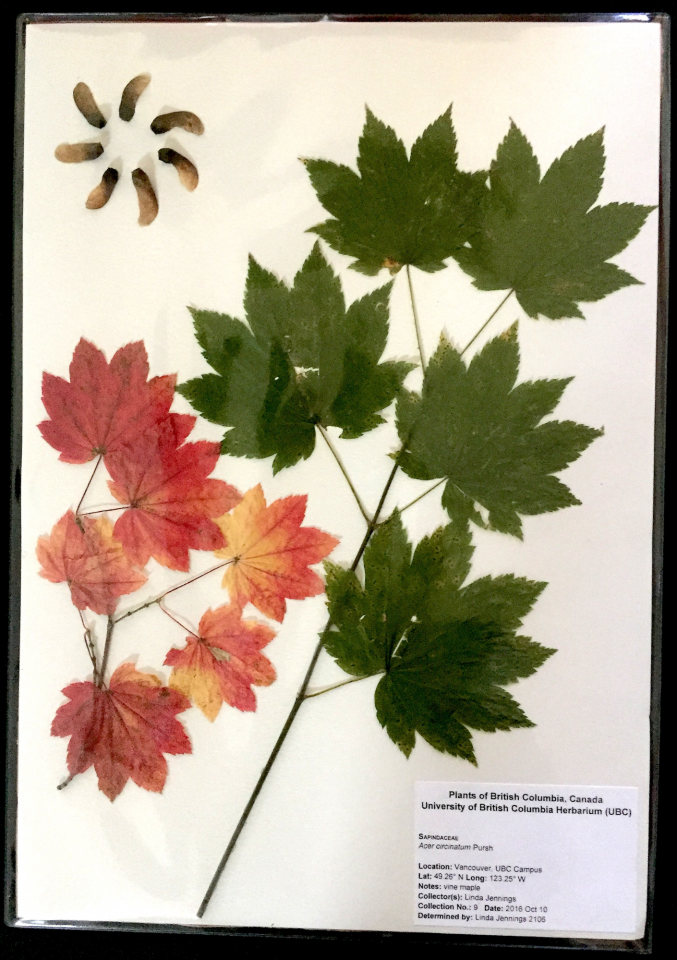
Museum specimens –
Acer (maple) species: Bigleaf maple ( Acer macrophyllum)
Materials
- 1 grain of rice (or a few so you can experiment!). Other similarly-sized seeds would work too: wheat, oat, barley, popcorn, bean – whatever you have on hand.
- Adhesives (tape, glue, etc)
- Paper to record your observations and make notes
- Upcycled materials: look in your garbage can, recycling, and compost bins to find materials to build your fruit (keep an eye out for lightweight, papery, stringy, and fluffy materials).
- Electric fan
- Measuring tape (or stop watch if you want to time it)
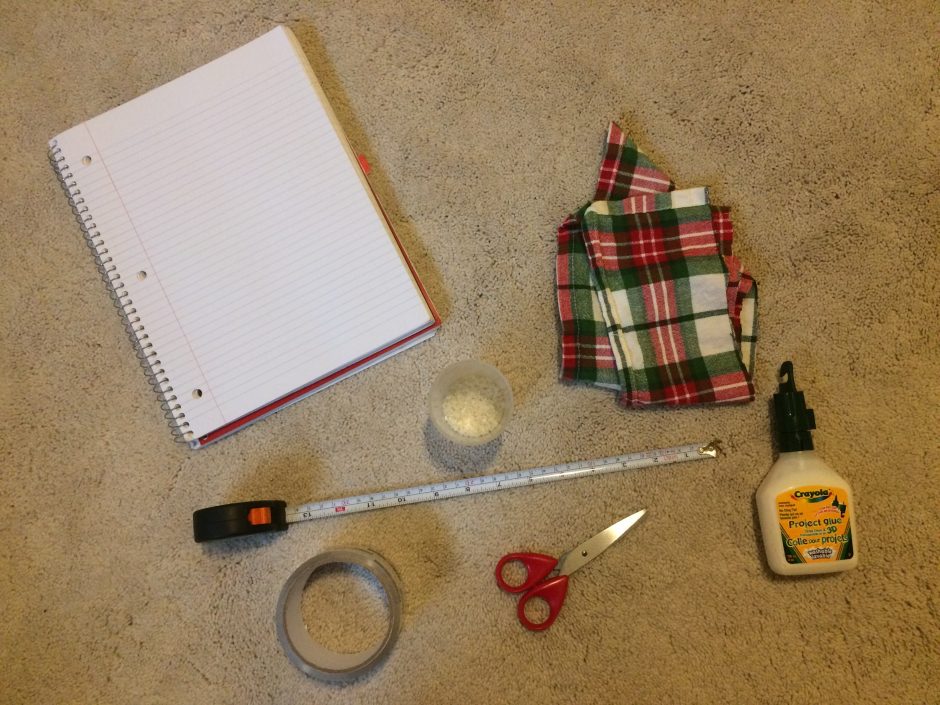
Build and test it!
- Ask an adult to help you put a fan on a table so it’s ~1m high and turn it on – this is your wind.
- Drop your grain in front of the fan. How far does it fly away from the fan? Imagine this as a “naked” seed with no fruit to help it
- Using recycled and upcycled materials, add a parachute, wing, or other structure to form a fruit attached to the seed. If you use glue, let it dry first!
- Try again in front of the fan – does it help? What do you notice?
- Build and change features on your fruit and test along the way. You might keep your past experiments or make notes to remember what you like or don’t like.
Below are some additional examples built by others! Can you explain the physics behind each of them? What type of seeds do they represent? Can you come up with a few other ways on your own?
Share your results with us!
- Try and try again – what works the best?
- When you have your best fruit, record it’s flight distance and send us your 5 longest flights! Show your seed and it’s flight on video.
- Are you doing this with a few friends or siblings? You can compete for the longest hang time in the air or distance. You can also challenge your parents!
- When you are done, take photos or videos of your work, and submit them to us online using the for on this page, or tag us on Instagram @ubcphasoutreach and @beatymuseum!
Questions?
If you have any questions, let us know! You can reach us using the comments section at the end of this page, send us an email at outreach@phas.ubc.ca, or message us on our Instagram post for this particular challenge. We look forward to hearing from you soon!
Share your design with us!
You can submit a video, photo, or drawing of your wind-dispersed seed here (click on “submit your design”) or tagging #PHASWindSeeds @UBCphasoutreach on Instagram. We’ll share your post and send you back feedback on your seed! Remember to tell us about the physics of your seed in the video.
Good luck!